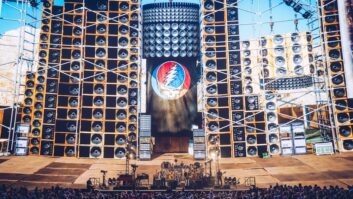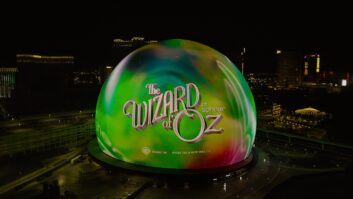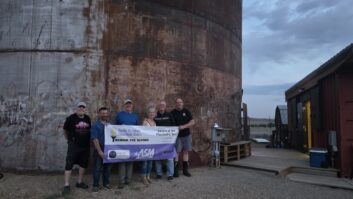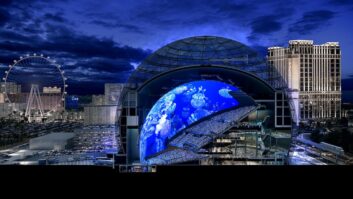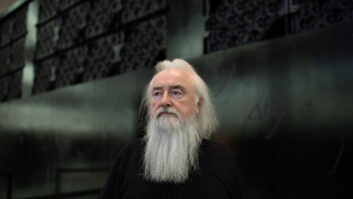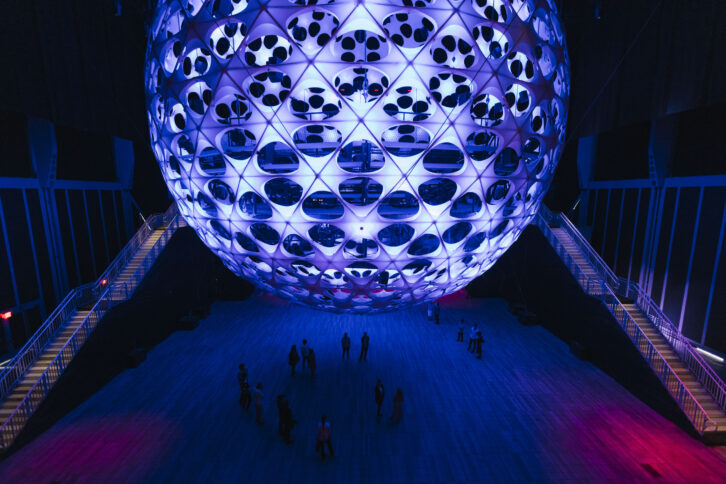
New York, NY (July 5, 2023)—It’s a match made in artist-meets-technology heaven: Sonic Sphere and NYC’s The Shed. The former is a traveling entertainment experience centered around sound and music and lights; the latter is a hip Manhattan venue that features avant-garde and experimental multimedia performances and installations.
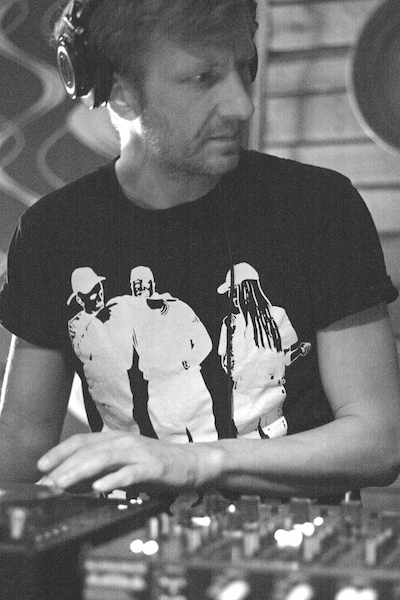
PHOTO: Courtesy of Sonic Sphere.
Through July 30, The Shed will host a curated series of truly immersive musical performances and listening sessions played back within the largest of the 12 iterations so far of Sonic Sphere, this version being a suspended 65-foot diameter sphere, with a hardwood dance floor ringing the inside, a performer’s platform suspended within a central net, seating for 250 and a custom 128.12 JBL immersive audio playback system.
“We actually use a method called Fibonacci packing to find the most even distribution of those speakers within the sphere, and that’s quite interesting because it’s sort of offset against the actual spiral geodesic base structure of the sphere itself,” says Merijn Royaards, a sonic architect who teaches sound design for film and art installation at the Bartlett School of Architecture at University College London; he’s also a co-founder of Sonic Sphere, along with Ed Cooke and Nicholas Christie. Alex Poots led the artistic curation at The Shed.
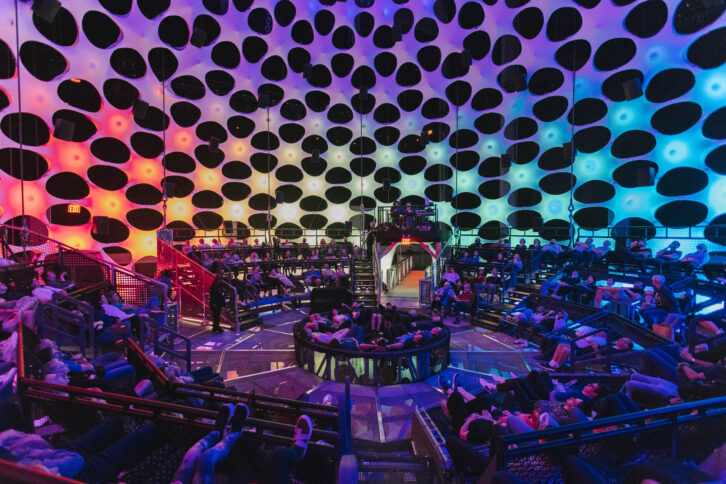
“This is our biggest installation yet,” he adds, noting that last year’s iteration at Burning Man was about half the size, though it incorporated the net, and most recently in Miami, they introduced some hard surfaces. “And this is a first for us, in that I’ve always been pushing for a hard dance floor. Most of it is meant to be a deep listening session, so the seating is a bit like an operating theater—it’s staggered, with benches at varying degrees of angles. Some of them are a bit more upright, some of them a bit more reclined. Obviously, it’s in the round, and now there are walkways in between for a pseudo-dance floor, and those walkways are perforated hard floors, which makes it acoustically as transparent as we could get.”
The exhibition is based around multiple 45-minute listening sessions each day, punctuated by scheduled performances from the likes of DJ/ producer UNIIQU3, DJ/producer Carl Craig, classical pianist Igor Levit, composer Steve Reich and drummer/producer Madame Gandhi, among others. For the playback portions, Royaards spent the weeks prior to opening night in a warehouse in Brooklyn, setting up the mixes in FLUX:: Immersive, the spatial audio creation tool designed in conjunction with Ircam.
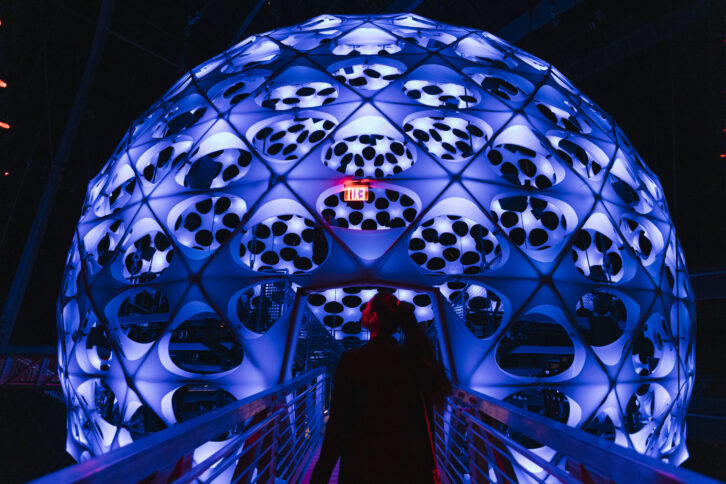
“We’ve got a mini sphere setup, and that allows me to mix to the format to an extent, but I’m always in the sweet spot,” Royaards notes. “On location, the performer will always be in the sweet spot. In terms of mixing, it’s limiting but also it opens up other creative doors, right? For this iteration, much more than for the others, I’ve been thinking more about making tracks immersive rather than spatial. A good example is the xx performance. There’s about 20-odd stems, the drums are all printed to one stereo track. In previous iterations, I might have been tempted to pull apart those drums and to use a pan on the guitar.
How We Hear the World In ‘32 Sounds’
“In this case, I actually took whatever was there—the drums are stereo but they are stereo in one corner and also in the other corner—and then I would sort of shift the guitars and do the same. For every listener, it will become an entirely immersive experience. And, of course, you got the periphery of the vertical mixing. That’s one way of making something immersive without thinking too much about having dynamic panning and objects in space. You use what you have, and you immerse the listener in that 3D environment that you have.”

